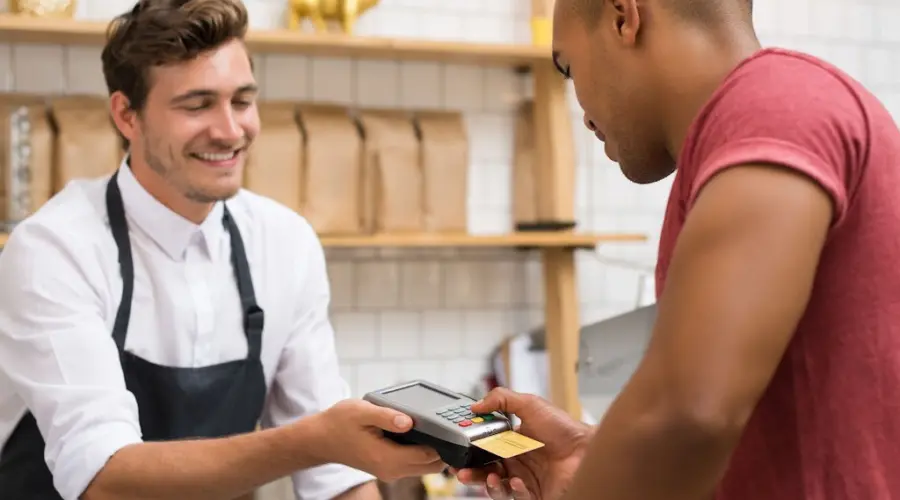You’ve probably heard the term retail payment processing before, but do you really know what it means?
Retail payment processing is the behind-the-scenes magic that allows businesses to accept and process payments from customers like you. Whether it’s swiping your card at the checkout counter or tapping your phone to make a contactless payment, retail payment processing is what makes it all happen smoothly and securely.
It involves a series of steps and technologies that ensure your payment information is securely transmitted, verified, and transferred to the merchant’s bank account. But it’s not just about convenience for you – it also offers a ton of benefits for businesses, making transactions faster, more efficient, and ultimately helping them grow.
Importance of Retail Payment Processing
You need retail payment processing to securely and efficiently handle customer transactions. When customers make purchases at your store, they expect a seamless payment experience. Retail payment processing enables you to accept various forms of payment, such as credit cards, debit cards, and mobile payments. This not only increases convenience for your customers but also expands your customer base. By offering multiple payment options, you’re catering to the preferences of different customers, making it more likely for them to complete the purchase.
Another crucial aspect of retail payment processing is the security it provides. With the rise of cyber threats, it’s essential to protect your customers’ sensitive information. Retail payment processing systems implement encryption and tokenization techniques to safeguard data during the transaction process. This gives your customers peace of mind, knowing that their personal and financial information is protected.
Efficiency is another key benefit of retail payment processing. Manual cash handling can be time-consuming and prone to errors. With a reliable payment processing system, you can streamline the checkout process, reducing waiting times and increasing customer satisfaction. Additionally, these systems often come with reporting and analytics features, allowing you to track sales, inventory, and customer trends, providing valuable insights to make informed business decisions.
Key Components of Retail Payment Processing
To ensure seamless and secure transactions, it’s essential to understand the key components of retail payment processing. These components play a crucial role in facilitating the movement of funds from the customer to the merchant in a fast and secure manner.
The first component is the point of sale (POS) terminal. This device is used by the merchant to accept payments from customers. It can be a physical terminal, a mobile device, or an online platform. The POS terminal securely captures the customer’s payment information and initiates the transaction process.
Next, we’ve the payment gateway. This is the system that connects the POS terminal to the payment processor. It securely transmits the payment information from the merchant to the processor for authorization and settlement. The payment gateway also encrypts the data to ensure the security of sensitive information.
The third component is the payment processor. This is the entity responsible for processing and authorizing the transaction. It verifies the customer’s payment details, checks for sufficient funds, and communicates with the customer’s bank to initiate the transfer of funds.
Lastly, we’ve the acquiring bank. This is the financial institution that provides the merchant with a merchant account to accept card payments. The acquiring bank receives the funds from the customer’s bank and deposits them into the merchant’s account.
Different Types of Retail Payment Methods
There are various types of retail payment methods available for customers to use when making purchases. One common method is cash, which involves using physical currency to pay for goods or services. Cash is widely accepted and provides immediate payment without any additional fees.
Another popular payment method is credit cards. With a credit card, customers can make purchases and pay for them at a later date. Credit cards offer convenience and security, but they may also come with interest charges if the balance isn’t paid in full each month.
Debit cards are also widely used in retail transactions. Similar to credit cards, debit cards allow customers to make purchases, but the funds are immediately deducted from their bank account. Debit cards offer the convenience of plastic without the risk of accumulating debt.
In recent years, mobile payment methods have gained popularity. These methods include digital wallets, such as Apple Pay and Google Pay, which allow customers to make payments using their smartphones. Mobile payments offer convenience and speed, as customers can simply tap their phones to make a purchase.
Lastly, some retailers accept alternative payment methods, such as gift cards or electronic transfers. These methods provide flexibility for customers who may not have access to traditional payment options.
How Retail Payment Processing Works
A key aspect of retail payment processing is the seamless and efficient handling of customer transactions. When a customer wants to make a purchase, they’ll typically use a debit or credit card.
The first step in the payment process is for the retailer to swipe or insert the card into a card reader. The card reader then communicates with the retailer’s point-of-sale (POS) system to verify the card’s validity and available funds. Once the card has been verified, the customer is prompted to enter their PIN or sign a receipt to authorize the transaction.
The POS system then sends the transaction information to the retailer’s payment processor, who acts as an intermediary between the retailer and the customer’s bank. The payment processor securely transmits the transaction details to the customer’s bank for approval.
If the transaction is approved, the payment processor sends a confirmation back to the retailer, who then completes the sale. The entire process happens in a matter of seconds, allowing for a smooth and quick checkout experience for the customer.
Benefits of Retail Payment Processing for Businesses
You will frequently experience numerous benefits by using retail payment processing for your business. One of the main advantages is the convenience it offers. With retail payment processing, you can accept various forms of payment, such as credit cards, debit cards, and mobile payments. This allows your customers to choose their preferred method of payment, making the purchasing process easier and more convenient for them.
Another benefit is the increased sales potential. By accepting multiple payment options, you can attract a wider range of customers who may not have cash on hand or prefer not to use it. This can lead to more sales and higher revenue for your business.
Retail payment processing also enhances security. With secure payment gateways and encryption technology, you can protect your customers’ sensitive information, such as credit card details, from fraud and theft. This builds trust with your customers and helps maintain a positive reputation for your business.
Additionally, retail payment processing provides detailed transaction records and reporting. This allows you to track and analyze sales data, identify trends, and make informed business decisions. It also simplifies accounting and reduces the risk of human error.
With various types of payment methods available, businesses can efficiently process transactions and provide a convenient shopping experience for customers.
Implementing retail payment processing systems brings numerous benefits, such as increased sales, improved customer satisfaction, and streamlined operations.
It’s clear that embracing retail payment processing is crucial for businesses to thrive in today’s competitive market.




